Themed collection Emerging Investigators Series

Introduction to the RSC Advances Emerging Investigators Series 2023
Dr Fabienne Dumoulin and Professor Shirley Nakagaki are delighted to introduce the RSC Advances Emerging Investigators series, which highlights some of the very best work of early career researchers.

RSC Adv., 2024,14, 26911-26912
https://doi.org/10.1039/D4RA90086C
Introduction to the RSC Advances Emerging Investigators Series 2022
Dr Fabienne Dumoulin and Professor Shirley Nakagaki are delighted to introduce the RSC Advances Emerging Investigators Series, which highlights some of the very best work of early career researchers.
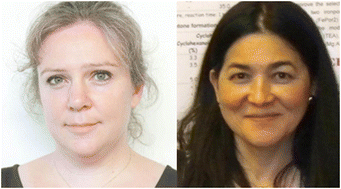
RSC Adv., 2023,13, 19011-19012
https://doi.org/10.1039/D3RA90054A
Introduction to the RSC Advances Emerging Investigators series 2021
RSC Advances is proud to present the 2021 Emerging Investigators series. Guest Edited by Professor James Batteas (Texas A&M University), this series showcases some of the very best work from chemists in the early stages of their independent careers.

RSC Adv., 2022,12, 22590-22591
https://doi.org/10.1039/D2RA90072F
Pulsed electric field technology as a promising pre-treatment for enhancing orange agro-industrial waste biorefinery
Pulsed electric field (PEF) technology improves energy efficiency in biorefineries.
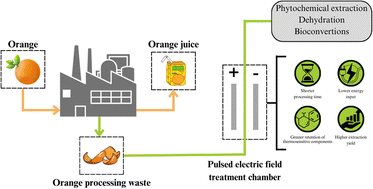
RSC Adv., 2024,14, 2116-2133
https://doi.org/10.1039/D3RA07848E
On the key role of aluminium and other heteroatoms during interzeolite conversion synthesis
The crucial roles of aluminium in driving and controlling interzeolite conversion, a useful catalyst synthesis protocol, are put under scrutiny.

RSC Adv., 2021,11, 26188-26210
https://doi.org/10.1039/D1RA02887A
Effect of a polymeric compound layer on jetting dynamics produced by bursting bubbles
Our work on jetting dynamics produced by bursting bubbles with a polymeric compound layer shows increasing volume fraction of the layer or decreasing polymer concentration enhances jet velocity, decreases jet radius, and produces more jet drops.

RSC Adv., 2025,15, 7710-7720
https://doi.org/10.1039/D5RA00228A
Thermogravimetric analysis of commercial tungsten molecular precursors for vapor phase deposition processes
In depth thermogravimetric analysis and direct comparison of commercial volatile molecular tungsten-based precursors for atomic layer deposition.

RSC Adv., 2024,14, 39867-39873
https://doi.org/10.1039/D4RA07284G
Inverse design of lateral hybrid metasurfaces structural colour: an AI approach
In this work, we employ machine learning as a tool to optimise the design process, enabling the identification of the most effective metasurface structural colour without relying on conventional trial-and-error methods.

RSC Adv., 2024,14, 25678-25684
https://doi.org/10.1039/D4RA04981K
Temperature-dependent yield stress and wall slip behaviour of thermoresponsive Pluronic F127 hydrogels
A new method to calculate slip yield stress along with true yield stress is proposed in thermoresponsive hydrogels.

RSC Adv., 2024,14, 23772-23784
https://doi.org/10.1039/D4RA04825C
An ambipolar PEDOT-perfluorinated porphyrin electropolymer: application as an active material in energy storage systems
Development of a new n-p polymer based on the electropolymerization of a dual-functional porphyrin-EDOT monomer. The ambipolar polymeric material showed promising pseudocapacitive behavior for energy storage devices.

RSC Adv., 2024,14, 15929-15941
https://doi.org/10.1039/D4RA00945B
Effect of a novel drying method based on supercritical carbon dioxide on the physicochemical properties of sorghum proteins
The aim of this research was to use supercritical carbon dioxide (SC-CO2) drying as a novel approach for generating sorghum protein concentrates/isolates with enhanced functional properties.

RSC Adv., 2024,14, 5851-5862
https://doi.org/10.1039/D3RA07426A
First total synthesis of caerulomycin K: a case study on selective, multiple C–H functionalizations of pyridines
A radical change: the first 3-steps total synthesis of caerulomycin K was achieved exploiting Minisci chemistry using cheap starting materials.

RSC Adv., 2024,14, 5542-5546
https://doi.org/10.1039/D4RA00589A
Distribution and toxicity of dihydroxybenzenes in drinking water sources in Nigeria
This study provides, for the first time, data on the distribution and toxicity of catechol (CAT) and hydroquinone (HQ) in drinking water sources from Africa.

RSC Adv., 2024,14, 982-994
https://doi.org/10.1039/D3RA04877B
Noncovalently bound excited-state dimers: a perspective on current time-dependent density functional theory approaches applied to aromatic excimer models
We assess most recent TD-DFT methods on excimers and highlight shortcomings of current strategies to treat dispersion in excited states.
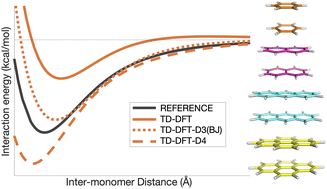
RSC Adv., 2023,13, 35964-35984
https://doi.org/10.1039/D3RA07381E
Synthesis and evaluation of photophysical, electrochemical, and ROS generation properties of new chalcogen-naphthoquinones-1,2,3-triazole hybrids
This study heralds an advancement in the synthesis of innovative hybrids with exceptional photophysical and electrochemical properties, promising advances in this area.

RSC Adv., 2023,13, 34852-34865
https://doi.org/10.1039/D3RA06977J
Simultaneous detection of neurotransmitters and Cu2+ using double-bore carbon fiber microelectrodes via fast-scan cyclic voltammetry
There is a great demand to develop an analytical tool capable of simultaneous detection of multi neurotransmitters and other environmental factors to broaden our understanding of the multifactorial complex etiology of neurodegenerative diseases.

RSC Adv., 2023,13, 33844-33851
https://doi.org/10.1039/D3RA06218J
Measuring tryptophan dynamics using fast scan cyclic voltammetry at carbon fiber microelectrodes with improved sensitivity and selectivity
Here we report an optimized sawhorse waveform in fast scan cyclic voltammetry for the sensitive and selective detection of tryptophan (Trp) at carbon fiber microelectrodes and demonstrate the utility of this method in measuring Trp dynamics in different cell lines.

RSC Adv., 2023,13, 26203-26212
https://doi.org/10.1039/D3RA04551J
Valence tautomerism in a cobalt–dioxolene complex containing an imidazolic ancillary ligand
The imidazolic tetradentate ligand bmimapy is used to prepare a new valence tautomeric coordination compound.

RSC Adv., 2023,13, 20050-20057
https://doi.org/10.1039/D3RA03235C
Reactions of nickel boranyl compounds with pnictogen–carbon triple bonds
The catalytic conversion of unsaturated small molecules such as nitriles into reduced products is of interest for the production of fine chemicals.

RSC Adv., 2023,13, 19158-19163
https://doi.org/10.1039/D3RA02797J
First report of trans-A2B-corrole derived from a lapachone derivative: photophysical, TD-DFT and photobiological assays
Photophysical properties of novel corroles containing lapachol units. DFT calculations and electrochemical analysis were conducted to better understand the corrole molecular structures. Corrole derivatives do not form aggregates in solution and generate ROS species.

RSC Adv., 2023,13, 11121-11129
https://doi.org/10.1039/D3RA00823A
Unidirectional drying of a suspension of diffusiophoretic colloids under gravity
We conduct numerical simulations and develop a macrotransport theory to show a diffusiophoresis-based, order-of-magnitude enhancement in the thickness of the colloidal layer produced by unidirectional drying of an electrolyte-colloid suspension.

RSC Adv., 2023,13, 9247-9259
https://doi.org/10.1039/D3RA00115F
Adsorption of cationic surfactant as a probe of the montmorillonite surface reactivity in the alginate hydrogel composites
Clay included alginate-clay composites is the only responsible for benzalkonium chloride adsorption. Adsorption mechanism occurs by cation exchange at low concentrations. The clay encapsulation promotes tail–tail interaction among surfactants.
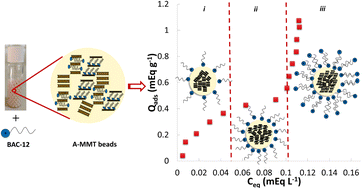
RSC Adv., 2022,12, 35469-35476
https://doi.org/10.1039/D2RA07405B
Impact of the choice of buffer on the electrochemical reduction of Cr(VI) in water on carbon electrodes
The nature of the buffer influences the PCET step gating Cr(VI) reduction in water at pH 4.75, as well as the extent of deposition on carbon electrodes. Electrode activity is recovered without polishing, through a simple acid wash step.

RSC Adv., 2022,12, 32592-32599
https://doi.org/10.1039/D2RA05943F
Recovery of bacterioruberin and proteins using aqueous solutions of surface-active compounds
Bacterioruberin and proteins were recovered from a marine bacterium by using aqueous solutions of surface-active compounds.

RSC Adv., 2022,12, 30278-30286
https://doi.org/10.1039/D2RA02581G
Cation–π and hydrophobic interaction controlled PET recognition in double mutated cutinase – identification of a novel binding subsite for better catalytic activity
Molecular recognition and binding of PET on cutinase controlled by switching between π–π and cation–π interactions.

RSC Adv., 2022,12, 20563-20577
https://doi.org/10.1039/D2RA03394A
Retracted Article: Noncovalently bound excited-state dimers: a perspective on current time-dependent density functional theory approaches applied to aromatic excimer models
We assess recent TD-DFT methods on excimers and highlight shortcomings of current strategies to treat dispersion in excited states.
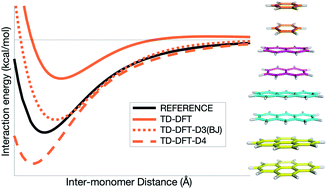
RSC Adv., 2022,12, 13014-13034
https://doi.org/10.1039/D2RA01703B
Gelation phase diagrams of colloidal rod systems measured over a large composition space
Colloidal rod systems used as rheological modifiers are characterized over a large composition space with microrheology and bulk rheology. Phase diagrams are built that enable identification of compositions with desired properties eliminating trial-and-error experiments.
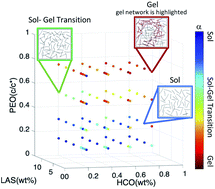
RSC Adv., 2022,12, 12902-12912
https://doi.org/10.1039/D2RA00609J
Continuous flow Meerwein–Ponndorf–Verley reduction of HMF and furfural using basic zirconium carbonate
Reduction of furfural and HMF in a continuous flow regime mediated by basic zirconium carbonate using 2-propanol as a solvent and reducing agent towards the synthesis of platform chemicals is presented.

RSC Adv., 2022,12, 7980-7989
https://doi.org/10.1039/D2RA00588C
Modulating catalytic activity of a modified flavin analogue via judicially positioned metal ion toward aerobic sulphoxidation
Design and synthesis of a catalytically efficient metal-flavin complex toward aerobic sulphoxidation was achieved via judicially positioning the metal ion near the catalytic site thereby assisting the intermediate formation.
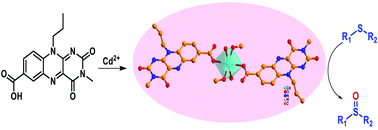
RSC Adv., 2022,12, 3990-3995
https://doi.org/10.1039/D1RA06558K
Homogeneous antibody–angiopep 2 conjugates for effective brain targeting
Homogeneous conjugation of angiopep-2 to a monoclonal antibody improves binding affinity for brain microvascular endothelial cells and accumulation into brain tissues and tumors across the BBB.
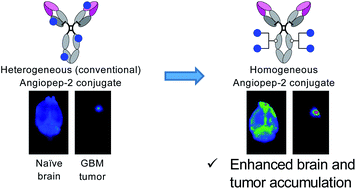
RSC Adv., 2022,12, 3359-3364
https://doi.org/10.1039/D1RA08131D
Lipase-catalyzed acylation of levoglucosan in continuous flow: antibacterial and biosurfactant studies
Ipase-catalyzed transesterification of LG under continuous flow conditions.
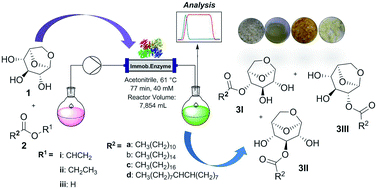
RSC Adv., 2022,12, 3027-3035
https://doi.org/10.1039/D1RA08111J
Hydrogel gratings with patterned analyte responsive dyes for spectroscopic sensing
This is an unprecedented report of hydrogel gratings with an analyte responsive dye immobilised in alternating strips where the patterned dye is its own dispersive element to perform spectroscopic sensing.

RSC Adv., 2021,11, 40197-40204
https://doi.org/10.1039/D1RA08610C
Modulation of flexo-rigid balance in photoresponsive thymine grafted copolymers towards designing smart healable coating
Photo-crosslinking using [2 + 2] cycloaddition in thymine grafted low viscosity polymer generates flexorigid domain to result self-healing polymer with increased hydrophobicity for potential use as smart coating material.

RSC Adv., 2021,11, 39376-39386
https://doi.org/10.1039/D1RA07425C
Influence of water-soluble pillararene hosts on Kemp elimination
Water-soluble pillar[5]arenes with different rim charges have been successfully used to catalyze Kemp elimination reaction of 1,2-phenylisoxazole derivatives.
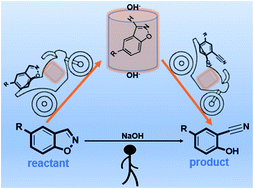
RSC Adv., 2021,11, 38115-38119
https://doi.org/10.1039/D1RA07958A
Investigation of the individual human sulfatome in plasma and urine samples reveals an age-dependency
Profile of the human core sulfatome in urine and plasma samples.
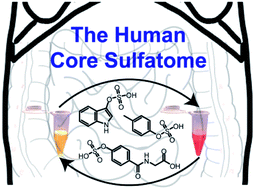
RSC Adv., 2021,11, 34788-34794
https://doi.org/10.1039/D1RA05994G
An ultrafast enzyme-free acoustic technique for detaching adhered cells in microchannels
We report a novel acoustofluidic method for detaching adhered cells from microchannel surfaces. This method enables a rapid (i.e., on the order of seconds), cost-effective, and easy-to-operate cell detachment strategy with high cellular viability.

RSC Adv., 2021,11, 32824-32829
https://doi.org/10.1039/D1RA04875A
Efficient artificial light-harvesting system constructed from supramolecular polymers with AIE property
An artificial light-harvesting system based on supramolecular polymers has been successfully constructed in aqueous media, which displays tunable emission with efficient energy transfer and high antenna effect.
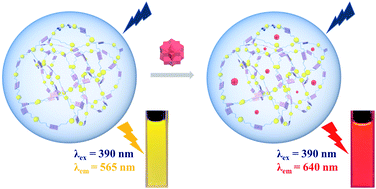
RSC Adv., 2021,11, 30041-30045
https://doi.org/10.1039/D1RA06239E
The molecular mechanism of P450-catalyzed amination of the pyrrolidine derivative of lidocaine: insights from multiscale simulations
Nitrogen heterocycles are key and prevalent motifs in drugs.

RSC Adv., 2021,11, 27674-27680
https://doi.org/10.1039/D1RA04564D
Preparation of solution processed photodetectors comprised of two-dimensional tin(II) sulfide nanosheet thin films assembled via the Langmuir–Blodgett method
Norton et al. report the manufacture of fully solution processed photodetectors based on two-dimensional tin(II) sulfide assembled via the Langmuir–Blodgett method.

RSC Adv., 2021,11, 26813-26819
https://doi.org/10.1039/D1RA04470B
Selective hydroxylation of aryl iodides to produce phenols under mild conditions using a supported copper catalyst
Atomically dispersed Cu catalyst was designed for highly efficient hydroxylation of aryl iodides under mild conditions.

RSC Adv., 2021,11, 25348-25353
https://doi.org/10.1039/D1RA04112F
Phase-dependent dielectric properties and proton conduction of neopentyl glycol
Phase-dependent dielectric properties and proton conduction of neopentyl glycol (NPG) are studied systematically over a wide temperature range via broadband dielectric spectroscopy.
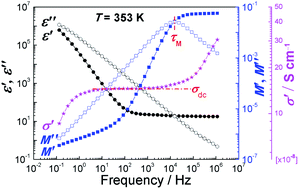
RSC Adv., 2021,11, 23228-23234
https://doi.org/10.1039/D1RA03366B
Photoactive antimicrobial coating based on a PEDOT-fullerene C60 polymeric dyad
A photostable and photodynamic antimicrobial surface was developed. The antimicrobial activity of the material reached outstanding levels of inactivation under different conditions: planktonic suspensions, adhered cells to the surface, and biofilms.
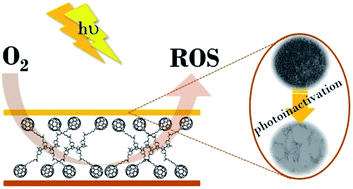
RSC Adv., 2021,11, 23519-23532
https://doi.org/10.1039/D1RA03417K
Polydopamine coated hypodermic needles as a microextraction device for the determination of tricyclic antidepressants in oral fluid by direct infusion MS/MS
Hypodermic needles coated with polydopamine for the extraction of antidepressants.

RSC Adv., 2021,11, 22683-22690
https://doi.org/10.1039/D1RA02721B
The photophysical properties of naphthalene bridged disilanes
The photophysical properties of different structural isomers of naphthalene bridged disilanes are distinct. The presence of the Si–Si bond is key to excimer formation in non-polar solvents.

RSC Adv., 2021,11, 21343-21350
https://doi.org/10.1039/D1RA02961D
Cross-linking of a polyketide synthase domain leads to a recyclable biocatalyst for chiral oxygen heterocycle synthesis
Cross-linking of the polyketide synthase domain AmbDH3 led to an active aggregate with improved properties for the chemoenzymatic synthesis of chiral oxygen heterocycles, such as recyclability and facile purification.

RSC Adv., 2021,11, 20248-20251
https://doi.org/10.1039/D1RA03692K
Development of a schwarzite-based moving bed 3D printed water treatment system for nanoplastic remediation
The impact of micro and nanoplastic debris on our aquatic ecosystem is among the most prominent environmental challenges we face today.

RSC Adv., 2021,11, 19788-19796
https://doi.org/10.1039/D1RA03097C
Green synthesis of ZnO coated hybrid biochar for the synchronous removal of ciprofloxacin and tetracycline in wastewater
Preparation of biochar from kaolinite and coconut husk (KCB) and further activated with HCl (KCB-A) and KOH (KCB-B) via a microwave technique for the remediation of ciprofloxacin (CIP) and tetracycline (TET) from water was carried out.

RSC Adv., 2021,11, 18483-18492
https://doi.org/10.1039/D1RA01130H
GNPS-guided discovery of xylacremolide C and D, evaluation of their putative biosynthetic origin and bioactivity studies of xylacremolide A and B
Targeted HRMS2-GNPS-based metabolomic and genomic analysis of the fungal garden antagonist Pseudoxylaria sp. X187 resulted in the identification of xylacremolide C and D and the identification of their putative PKS-NRPS-based biosynthesis.
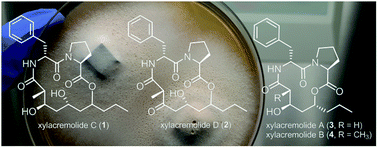
RSC Adv., 2021,11, 18748-18756
https://doi.org/10.1039/D1RA00997D
RAFT polymerization mediated core–shell supramolecular assembly of PEGMA-co-stearic acid block co-polymer for efficient anticancer drug delivery
In this work, core–shell supramolecular assembly polymeric nano-architectures containing hydrophilic and hydrophobic segments were synthesized via reversible addition fragmentation chain transfer (RAFT) polymerization.

RSC Adv., 2021,11, 16913-16923
https://doi.org/10.1039/D1RA01660A
Identification of a covalent binder to the oncoprotein gankyrin using a NIR-Based OBOC screening method
Despite huge advancements in the process of synthesizing small molecules as part of one-bead-one-compound (OBOC) libraries, progress lags in the ability to rank potential hits from a primary library screen.

RSC Adv., 2021,11, 12794-12801
https://doi.org/10.1039/D0RA10976B
Selective release of a potent anticancer agent from a supramolecular hydrogel using green light
Selective green-light triggered release of an anticancer agent under physiological conditions from a supramolecular hydrogel.
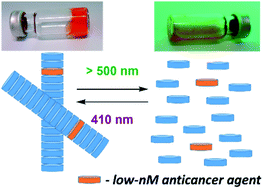
RSC Adv., 2021,11, 8546-8551
https://doi.org/10.1039/D0RA08893E
From cow manure to bioactive carbon dots: a light-up probe for bioimaging investigations, glucose detection and potential immunotherapy agent for melanoma skin cancer
Investigation of the immunological effect of light-up carbon-dots on cancer-bearing mice.
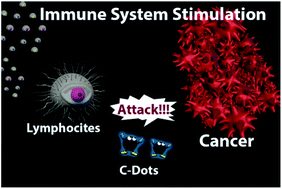
RSC Adv., 2021,11, 6346-6352
https://doi.org/10.1039/D0RA10859F
Enhanced performance of pencil-drawn paper-based electrodes by laser-scribing treatment
This study demonstrates a fast and simple method to fabricate enhanced ePADs using pencil-drawing with a CO2 laser treatment of the carbon surface deposited on paper. The sensor was applied to the detection of furosemide in a synthetic urine sample.
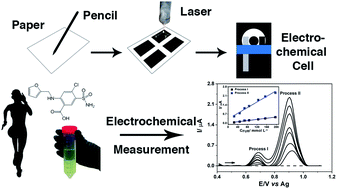
RSC Adv., 2021,11, 1644-1653
https://doi.org/10.1039/D0RA08874A
About this collection
RSC Advances is proud to present the Emerging Investigators series! Guest Edited by Professor Shirley Nakagaki (Federal University of Paraná, Brazil) and Dr Fabienne Dumoulin (Acıbadem Mehmet Ali Aydınlar Universit, Türkiye) this series showcases some of the very best work from chemists in the early stages of their independent careers.
Articles will be added to the series as they are published. If you are interested in publishing in our upcoming series, please see our open call page for more information.